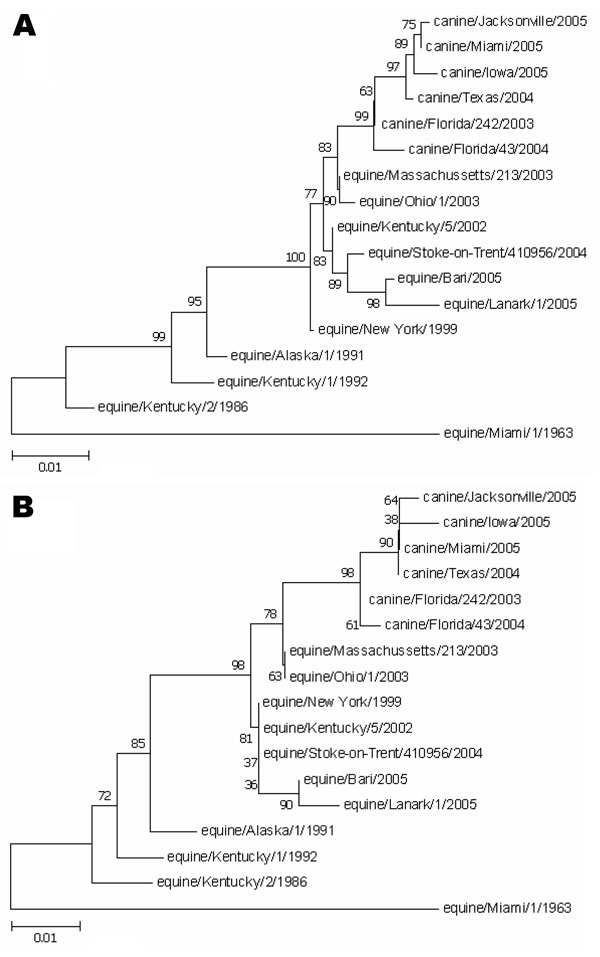Volume 14, Number 6—June 2008
Research
Influenza A Virus (H3N8) in Dogs with Respiratory Disease, Florida
Figure

Figure. Phylogenetic relationships among the hemagglutinin 3 (H3) genes. A) Nucleotide tree of the canine influenza virus H3 genes with contemporary and older equine H3 genes. B) Amino acid tree of the canine influenza virus H3 protein with contemporary and older equine H3 proteins. Bootstrap analysis values >80% are shown. Scale bar indicates nucleotide or amino acid substitutions per site.
Page created: July 09, 2010
Page updated: July 09, 2010
Page reviewed: July 09, 2010
The conclusions, findings, and opinions expressed by authors contributing to this journal do not necessarily reflect the official position of the U.S. Department of Health and Human Services, the Public Health Service, the Centers for Disease Control and Prevention, or the authors' affiliated institutions. Use of trade names is for identification only and does not imply endorsement by any of the groups named above.